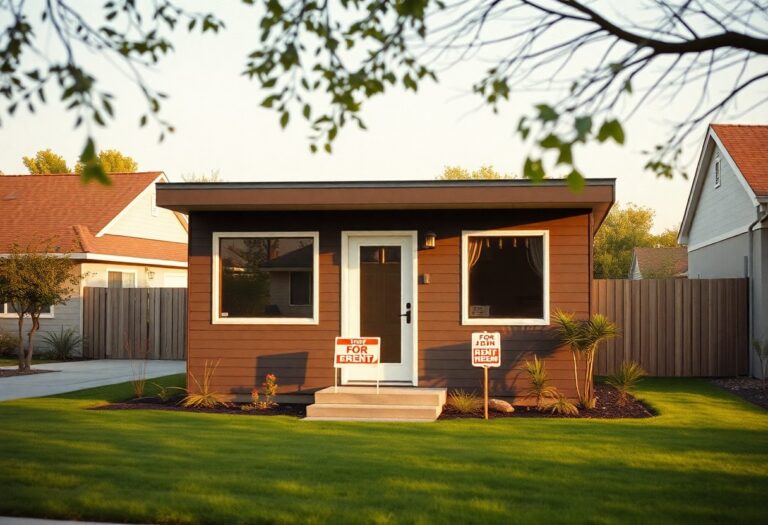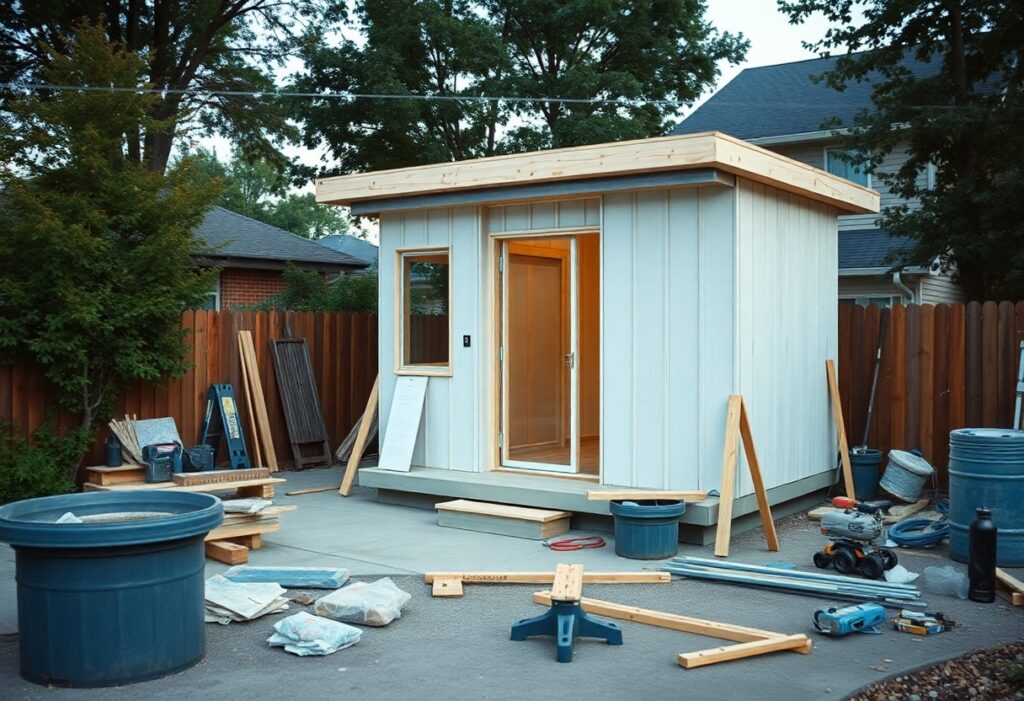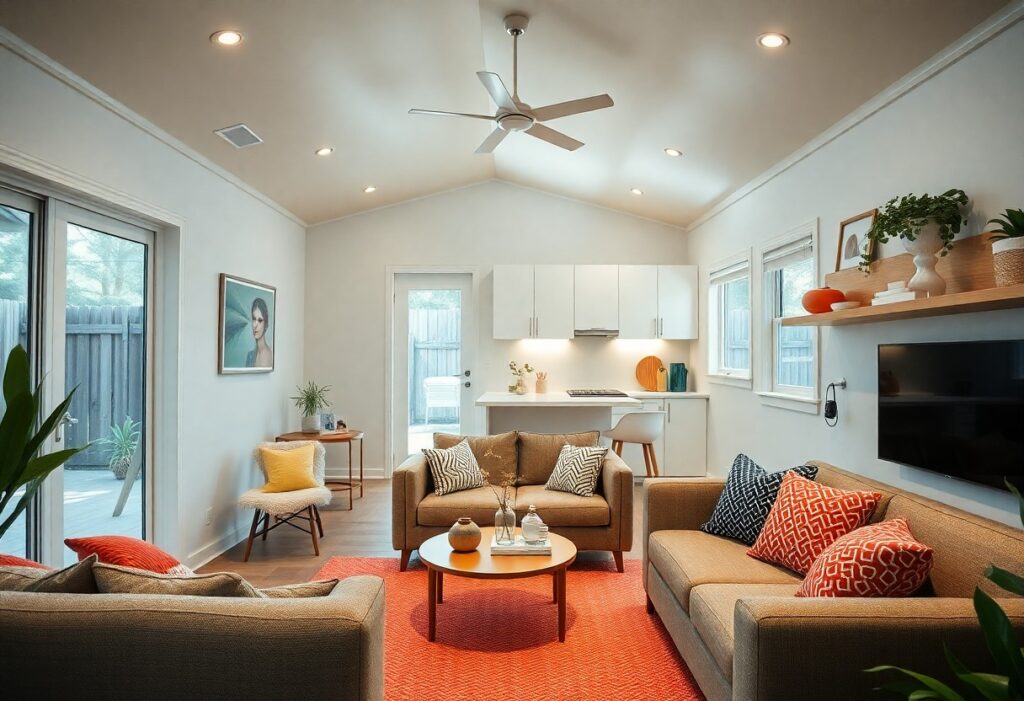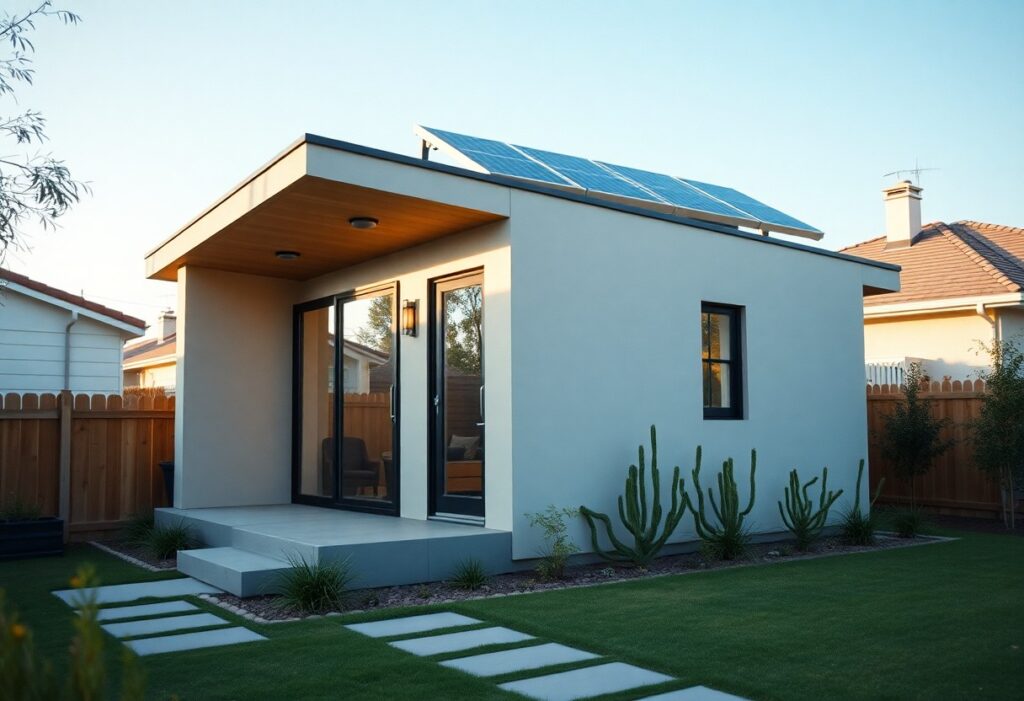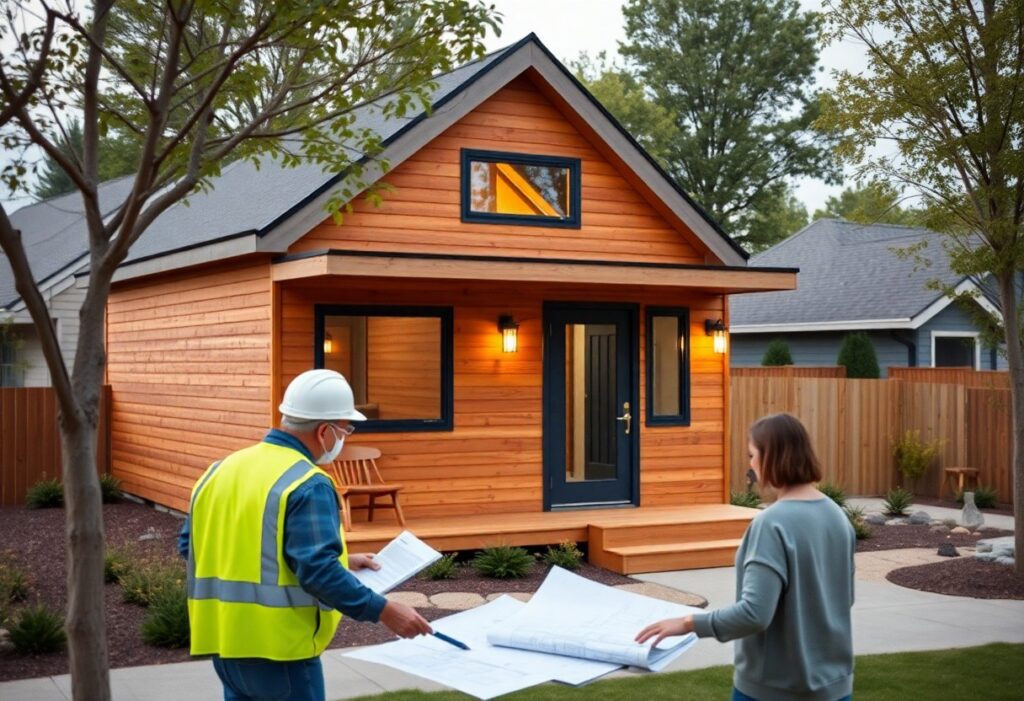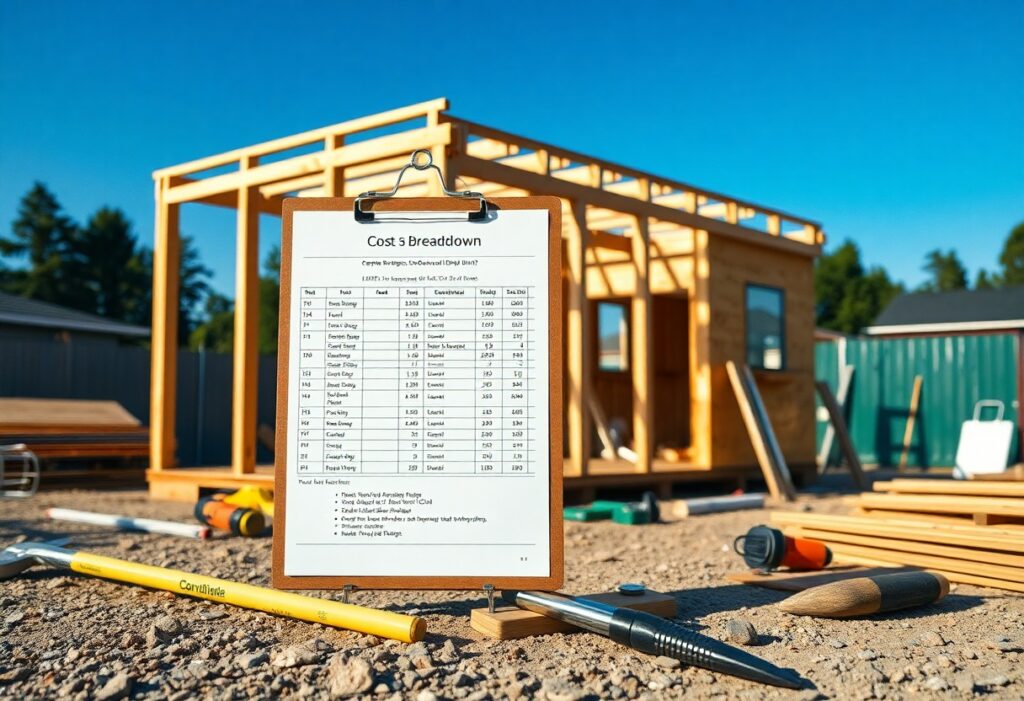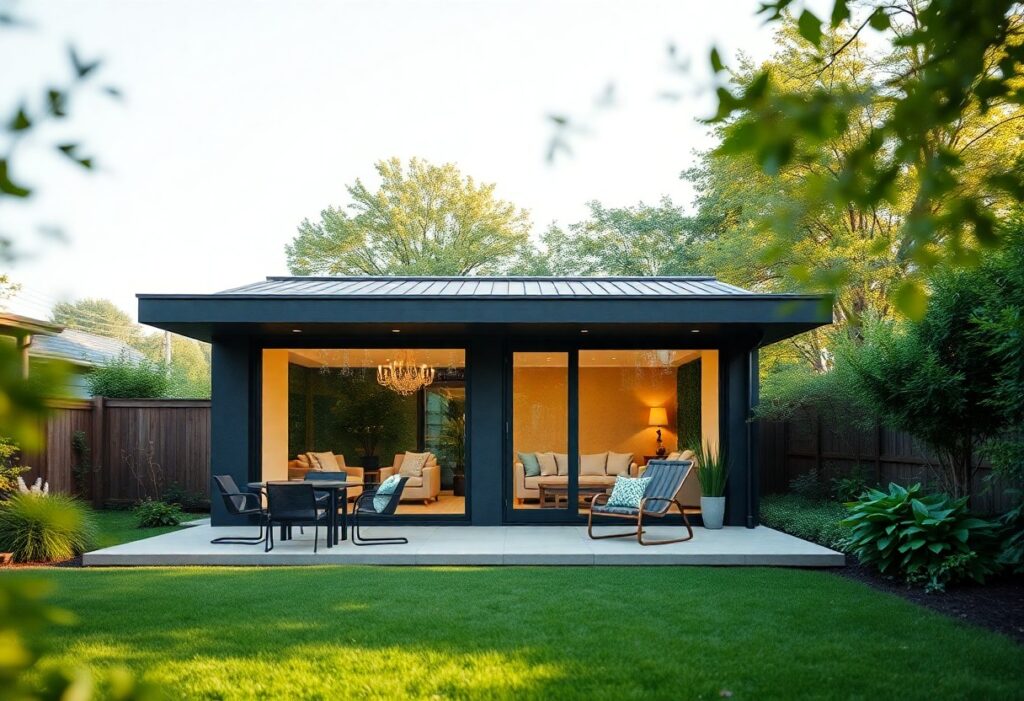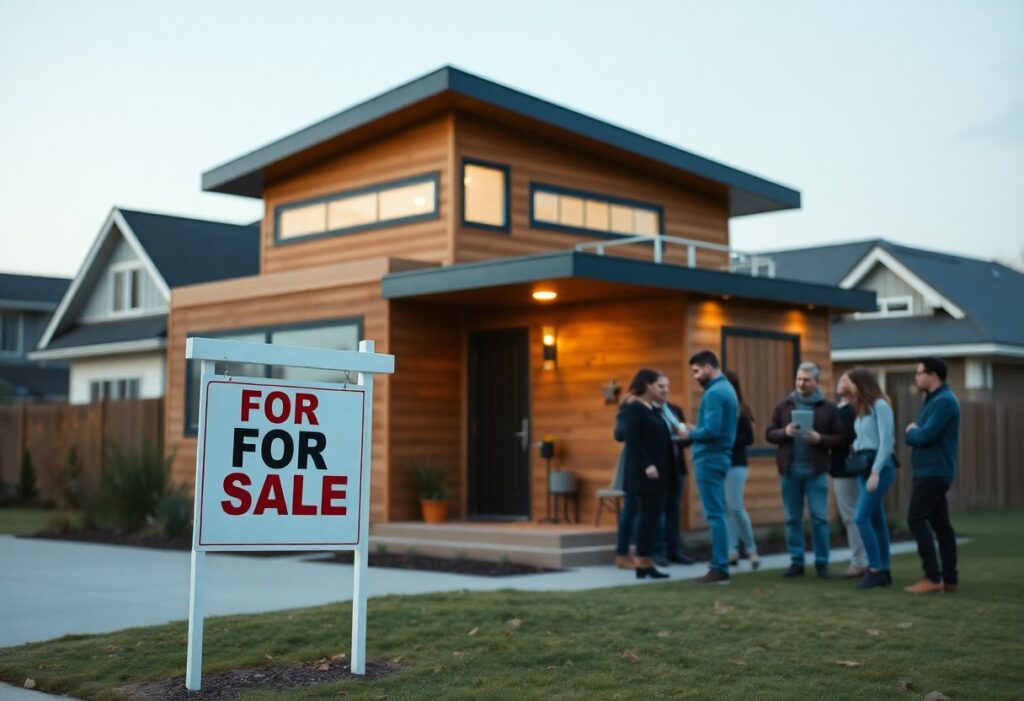It’s imperative for you to understand the growing trend of Accessory Dwelling Units (ADUs) and how they can significantly enhance your real estate portfolio. As urban housing demands increase, ADUs provide a unique opportunity for you to maximize rental income and increase property value. However, navigating local regulations and zoning laws can be challenging and may require expert guidance. In this post, you’ll discover the benefits and potential pitfalls of investing in ADUs, ensuring you make informed decisions to boost your investments effectively.
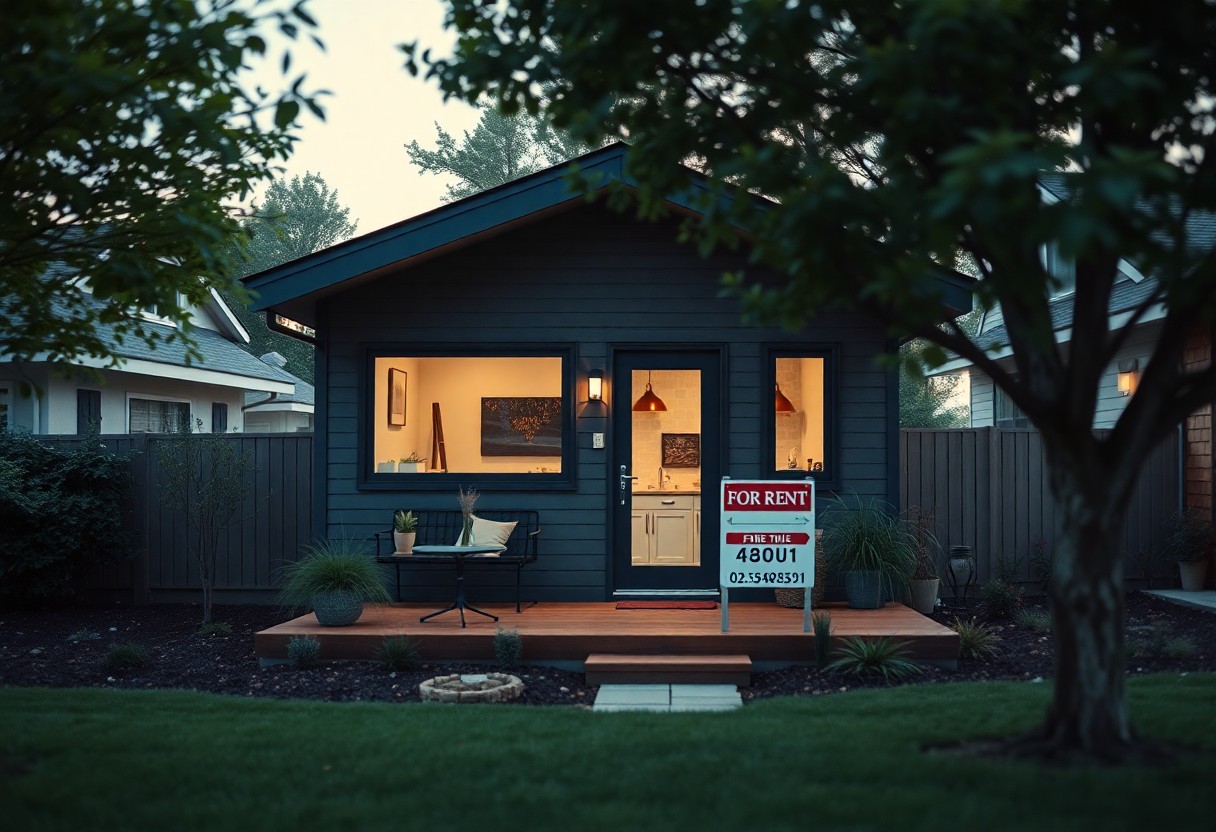
Key Takeaways:
- Increased Property Value: Investing in an ADU can significantly enhance the overall value of the property, making it a lucrative addition.
- Rental Income Potential: ADUs provide an opportunity for generating consistent rental income, which can offset mortgage costs and improve cash flow.
- Zoning and Compliance: Understanding local zoning regulations and compliance requirements is vital for successful ADU investment and to avoid potential legal challenges.
1. ADUs increase property value and rental income potential.
2. Design flexibility caters to diverse tenant needs.
3. Local regulations impact construction and rental strategies.
4. Financing options can enhance profitability of ADUs.
5. Demographic trends favor multi-generational living spaces.
6. ADUs offer sustainable housing solutions in urban areas.
Understanding ADUs
While many homeowners are exploring ways to optimize their properties, the concept of Accessory Dwelling Units (ADUs) has emerged as a viable and lucrative solution for investors. Understanding the nuances of ADUs can significantly enhance your investment strategy, allowing you to capitalize on this growing trend and increase your rental income potential.
Definition of Accessory Dwelling Units
The Accessory Dwelling Unit (ADU) is a secondary, self-contained living space situated on the same lot as a primary residence. These units often include a sleeping area, kitchen, and bathroom, providing independent living capabilities, which makes them appealing for both renters and homeowners seeking extra income.
Types of ADUs
Definition of Types of ADUs can significantly influence your investment choices. The most common types include:
| Detached ADUs | Standalone units separate from the main home. |
| Attached ADUs | Units connected to the primary residence. |
| Garage Conversions | Existing garages converted into living spaces. |
| Basement ADUs | Rentable units set up in basements. |
| Room Additions | Additional bedrooms/bathrooms added to the home. |
Thou may find these options exceptionally beneficial for boosting your revenue streams and diversifying your property portfolio.
Plus, understanding the characteristics of each type of ADU can greatly impact your decision-making process. Consider the following variations:
| Location | ADUs can be located within urban, suburban, and rural settings. |
| Design | ADUs vary from modern styles to traditional designs. |
| Size | Units typically range from 300 to 1,200 square feet. |
| Construction | ADUs may involve new builds or remodels of existing structures. |
| Legalities | Local regulations dictate zoning and building codes. |
Thou should carefully assess each type to identically align with your investment goals and market demands.
Market Demand for ADUs
There’s a significant surge in demand for Accessory Dwelling Units (ADUs) as various factors combine to create a favorable environment for investment. Urbanization, affordable housing shortages, and changing family dynamics have increased interest in these units, making them a lucrative option for investors. Homeowners recognize the potential to generate rental income and maximize their property value by adding ADUs, transforming residential neighborhoods and contributing positively to community atmosphere.
Demographic Trends
On the rise is the trend of multi-generational living, where families seek to accommodate aging parents or adult children. This demographic shift is driving demand for ADUs, allowing homeowners to create private spaces for their loved ones while maintaining proximity. Additionally, young professionals and students prefer flexible living arrangements near urban areas, further increasing interest in ADUs as affordable housing solutions.
Rental Market Potential
To tap into the rental market potential of ADUs, you should consider the growing interest in short-term and long-term rental options. As remote work becomes more common, you’ll find tenants seeking flexible living spaces that ADUs provide, offering you a chance to diversify your rental strategy and income streams.
But you should be cautious, as not all markets will yield consistent demand for ADU rentals. Conduct thorough market analysis to identify high-demand areas where regulations facilitate ADU construction. Keep an eye on local rental rates—setting competitive prices can ensure maximized occupancy. Furthermore, consider the unit’s features and layout to appeal to different renter demographics, ensuring your ADU stands out in a competitive market.
Financial Considerations
Many potential ADU investors find themselves weighing the financial benefits against the commitments involved. Understanding the initial and long-term financial implications is key to making informed decisions. From construction costs to potential rental income, each factor plays a vital role in determining whether an ADU will be a profitable addition to your portfolio.
Initial Investment Costs
Before exploring into an ADU project, you must assess the initial investment costs. These can include land acquisition, permits, construction costs, and any necessary utilities. It’s important to obtain accurate estimates to ensure your spending aligns with the projected return on your investment.
Long-term Return on Investment
On considering long-term return on investment, you should keep in mind the potential rental income and property value appreciation that an ADU can generate. This additional revenue stream can significantly enhance your overall financial situation.
Hence, investing in an ADU can lead to a substantial increase in your property’s value, providing a significant cash flow through rental income. Additionally, as property demand continues to rise, the value of your ADU and the primary property may appreciate over time. However, always factor in upkeep and property management costs, as these can impact your overall profitability in the long run. Balancing these elements allows you to maximize your investment potential.
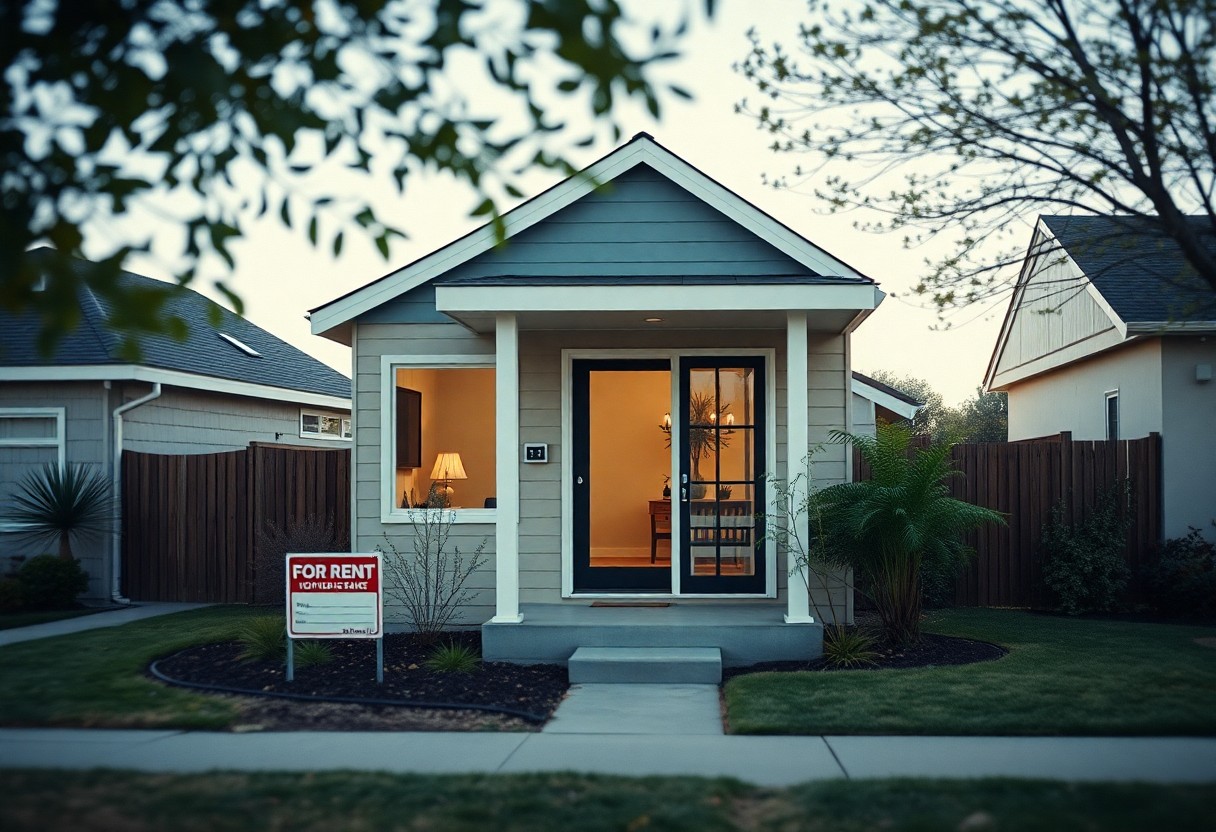
Legal and Zoning Regulations
Keep in mind that navigating The Accessory Dwelling Unit (ADU) Solution involves understanding various legal and zoning regulations. Each locality has its own set of rules, which can greatly impact the feasibility and profitability of your investment. Ensure you conduct thorough research before exploring into an ADU project to avoid costly mistakes down the line.
Local Ordinances and Permits
Above all, local ordinances and permits are the first hurdle you need to clear when planning your ADU. Each municipality has specific zoning laws that dictate where and how ADUs can be built, including restrictions on size, height, and occupancy. It is necessary to consult your local planning department to secure the necessary permits before beginning any construction work.
Compliance with Building Codes
Above these local regulations, compliance with building codes is non-negotiable for your ADU project. These codes ensure safety and durability in your construction practices, covering electrical, plumbing, and structural aspects. Not adhering to these regulations can lead to fines, delayed projects, or even orders to demolish non-compliant structures.
Regulations vary from one area to another, but failing to comply with building codes can not only put your investment at risk, but also create serious safety hazards. You’ll need to ensure your ADU meets all local safety standards as well as energy efficiency requirements. If building without the proper permits and codes, you could face significant legal repercussions that jeopardize your financial success in the long run. It’s advisable to work with a qualified contractor who understands local building codes to navigate these complexities effectively.
Financing Options for ADUs
Your approach to financing an Accessory Dwelling Unit (ADU) can significantly impact your investment returns. Various financing options are available, allowing you to choose the one that aligns with your financial strategy and goals. Understanding these options will empower you to enhance your property’s value and rental income potential.
Traditional Mortgages
For many investors, traditional mortgages serve as a reliable means to finance an ADU. This route often involves leveraging the equity in your current property or acquiring a new mortgage specifically for the construction or renovation of the ADU. By shopping around for competitive interest rates, you can optimize your financing terms.
Alternative Financing Methods
Behind traditional methods, you may want to explore alternative financing avenues such as partnerships, private loans, or crowdfunding. These options can provide greater flexibility, especially if you face challenges securing conventional loans due to strict lending criteria.
Alternative financing methods, such as home equity lines of credit (HELOC), can provide quick access to cash without the long approval process associated with traditional mortgages. Additionally, investor partnerships allow you to share costs and risks, making it easier to undertake larger projects. However, be aware of potential pitfalls, such as high-interest rates associated with private loans or the need for consensus with investors in partnership scenarios. Evaluating these options carefully will help you capitalize on the financing route that best suits your goals while mitigating any associated risks.
Management and Maintenance
Now that you’ve invested in an ADU, it’s crucial to understand the management and maintenance aspects that will keep your investment profitable. Proper management not only ensures that tenants are satisfied but also maximizes your returns. Whether you choose to self-manage or hire a property management company, having a proactive approach to operations can make a significant difference in your investment’s longevity and profitability.
Property Management Strategies
Management of your ADU can significantly impact your tenant experience and overall return on investment. Implementing effective strategies like regular communication with tenants and establishing clear lease agreements can help you minimize issues. Additionally, you may want to consider using property management software to streamline rent collection and maintenance requests, making it easier to manage your property while focusing on growth.
Maintenance Considerations
The upkeep of your ADU is key to preserving its value and ensuring tenant satisfaction. Routine inspections and maintenance checks can help you catch potential issues before they escalate into expensive repairs. Creating a maintenance schedule that includes seasonal tasks, like gutter cleaning and HVAC servicing, will not only prolong the life of your property but also enhance your tenants’ comfort.
In addition, prioritizing preventive maintenance can help you avoid costly fixes down the line. Addressing minor repairs promptly prevents them from evolving into more significant problems that could threaten your investment. Ensure that you have a reliable network of contractors and service professionals, as this will streamline repairs and enhancements when needed. Finally, keeping lines of communication open with your tenants regarding maintenance issues fosters a cooperative environment, ultimately leading to improved tenant retention.
Final Words
Following this, you can see that investing in ADUs can provide significant benefits for your real estate portfolio. These units offer a pathway to increasing rental income and enhancing property value while addressing housing shortages in many areas. As you explore this investment avenue, consider how ADUs can fit into your long-term strategy. For more detailed insights, check out What are ADUs in real estate? to gain a clearer understanding of their potential advantages.
FAQ
Q: What are ADUs and why are they important for investors?
A: ADUs, or Accessory Dwelling Units, are secondary housing units located on a single-family residential lot. They can be detached from the main house or integrated within it. For investors, ADUs present a unique opportunity as they can significantly increase property value, provide rental income, and help meet the growing demand for affordable housing. With the density of urban areas increasing, ADUs allow investors to make better use of their land while contributing to local housing solutions.
Q: How do financing options for ADUs differ from traditional real estate investments?
A: Financing for ADUs often involves different approaches than traditional mortgages. Investors may choose to finance the construction of an ADU through a renovation loan, which rolls the cost of construction into their existing mortgage. Additionally, some investors explore alternative financing options like home equity lines of credit (HELOCs) or personal loans specifically designed for home improvements. It’s beneficial for investors to consult with financial advisors to explore the best options available for funding an ADU project.
Q: What should investors consider when evaluating the potential return on investment (ROI) for an ADU?
A: When evaluating the potential ROI for an ADU, investors need to consider several factors, including location, construction costs, and rental rates in the area. Conducting a comparative market analysis can help determine what similar ADUs are renting for, which plays a critical role in ROI calculations. Additionally, investors should factor in ongoing expenses such as property management, maintenance, and utilities. It is wise to draft a detailed financial projection that includes these elements to gauge the long-term profitability of the ADU investment.

